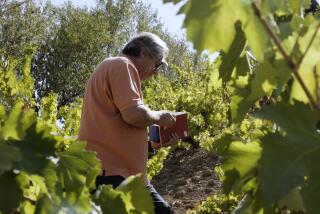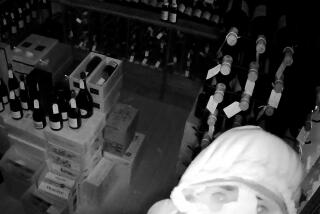Temptation Betters the Nose in Sampling of 300-Year-Old Wine
- Share via
ALMERE, Netherlands — The connoisseurs held the ruby vintage up to the sunlight, swirled it in their glasses and put their noses to the rim.
“It smells like cow dung!” one exclaimed.
“It won’t be easy to swallow this one,” another said.
But so strong was the temptation to sample a 300-year-old bottle of wine recovered from a sunken 17th century Dutch warship that none of the experts on the panel was able to resist Friday.
Indeed, they were in for a flavorful surprise.
“There’s a hint of fruit in it--of orange peel, marmalade and caramel. It’s surprisingly good,” said wine commentator Lucette Faber, as a fetid odor wafted through the tasting room.
The stout-bottomed, musty green flask was found by divers July 7 off the coast of the Wadden Sea, a shallow sound between the Dutch coast and the North Sea.
Strong currents had recently left the cannon frigate exposed on the sandy bottom near Texel Island, said Arent Vos, who heads the crew that undertook the mission for the Netherlands Institute for Ship and Underwater Archeology.
The wine experts guessed that the recovered wine was an early variant of a dry Port that had been colored with a small amount of elderberry juice.
Before the tasting, scientists carefully drilled a hole in the soft cork and transferred part of the contents into vacuum-sealed vials for laboratory tests.
Initial results estimated alcohol content at 10.6% and acidity levels comparable to modern wines.
“This must have been a very good wine at the time,” said Faber, who headed the panel of seven experts at Friday’s tasting. She noted that most wine at the time was shipped in vats and only the best vintages would have been bottled.
“I had four gulps, and I can still taste it,” she said. “People said I shouldn’t do it, you never know what’s in it. But I was extremely curious.”
More to Read
Eat your way across L.A.
Get our weekly Tasting Notes newsletter for reviews, news and more.
You may occasionally receive promotional content from the Los Angeles Times.








